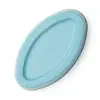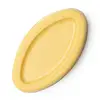What's inside
What's inside
 Key Ingredients
Key Ingredients

No key ingredients
 Benefits
Benefits

 Concerns
Concerns

 Ingredients Side-by-side
Ingredients Side-by-side

Illipe Butter
Skin ConditioningKaolin
AbrasiveGarcinia Indica Seed Butter
Skin ConditioningChondrus Crispus Extract
Skin ConditioningLimnanthes Alba Seed Oil
Skin ConditioningSimmondsia Chinensis Seed Oil
EmollientVitis Vinifera Seed Oil
EmollientCarthamus Tinctorius Seed Oil
MaskingButyrospermum Parkii Butter
Skin ConditioningSilica
AbrasiveParfum
MaskingHamamelis Virginiana Extract
AntiseborrhoeicChamomilla Recutita Oil
MaskingLavandula Angustifolia Extract
Skin ConditioningBoswellia Carterii Oil
MaskingPelargonium Graveolens Oil
MaskingCommiphora Myrrha Resin
MaskingArthrospira Platensis Extract
AntioxidantCitral
PerfumingCitronellol
PerfumingCoumarin
PerfumingGeraniol
PerfumingLimonene
PerfumingLinalool
PerfumingIllipe Butter, Kaolin, Garcinia Indica Seed Butter, Chondrus Crispus Extract, Limnanthes Alba Seed Oil, Simmondsia Chinensis Seed Oil, Vitis Vinifera Seed Oil, Carthamus Tinctorius Seed Oil, Butyrospermum Parkii Butter, Silica, Parfum, Hamamelis Virginiana Extract, Chamomilla Recutita Oil, Lavandula Angustifolia Extract, Boswellia Carterii Oil, Pelargonium Graveolens Oil, Commiphora Myrrha Resin, Arthrospira Platensis Extract, Citral, Citronellol, Coumarin, Geraniol, Limonene, Linalool
Astrocaryum Murumuru Seed Butter
EmollientIllipe Butter
Skin ConditioningMusa Paradisiaca Fruit
AstringentTapioca Starch
Vitis Vinifera Seed Oil
EmollientTheobroma Grandiflorum Seed Butter
Skin ConditioningMangifera Indica Seed Oil
EmollientPrunus Armeniaca Kernel Oil
MaskingSimmondsia Chinensis Seed Oil
EmollientSantalum Album Oil
MaskingCistus Ladaniferus Resin
MaskingHibiscus Abelmoschus Seed Oil
MaskingDipteryx Odorata Seed Extract
MaskingGardenia Jasminoides Meristem Cell Culture Extract
Skin ConditioningCarthamus Tinctorius Flower Extract
Skin ConditioningCitral
PerfumingCoumarin
PerfumingFarnesol
PerfumingLimonene
PerfumingLinalool
PerfumingParfum
MaskingAstrocaryum Murumuru Seed Butter, Illipe Butter, Musa Paradisiaca Fruit, Tapioca Starch, Vitis Vinifera Seed Oil, Theobroma Grandiflorum Seed Butter, Mangifera Indica Seed Oil, Prunus Armeniaca Kernel Oil, Simmondsia Chinensis Seed Oil, Santalum Album Oil, Cistus Ladaniferus Resin, Hibiscus Abelmoschus Seed Oil, Dipteryx Odorata Seed Extract, Gardenia Jasminoides Meristem Cell Culture Extract, Carthamus Tinctorius Flower Extract, Citral, Coumarin, Farnesol, Limonene, Linalool, Parfum
Ingredients Explained
These ingredients are found in both products.
Ingredients higher up in an ingredient list are typically present in a larger amount.
Citral is a fragrance and used to add a lemon-like scent to products. It is both naturally found in plants and created synthetically. In plants, it is commonly occurring in lemon myrtle, lemongrass, lemon tea-tree, lemon verbena, and other citruses.
The EU mandates Citral be listed separately as a fragrance. It is a known allergen and may cause contact dermatitis. Citral can also used as a masking ingredient.
The term 'fragrance' is not regulated in many countries. In many cases, it is up to the brand to define this term. For instance, many brands choose to label themselves as "fragrance-free" because they are not using synthetic fragrances. However, their products may still contain ingredients such as essential oils that are considered a fragrance.
The term 'citral' is a collective term for two geometric isomers: geranial/Citral A and neral/Citral B.
Learn more about CitralCoumarins are a group of substances found naturally in plants. There are over 1300 types of coumarins identified. It has a natural vanilla scent.
Coumarin is an identified EU known allergy, meaning it may cause an allergic reaction when applied to the skin.
In many countries, coumarin is banned as a food additive. However, it can be found in soaps, tobacco products, and some alcohol drinks.
Plants use coumarins as a chemical defense. Some plants that have coumarins include lavender, tonka beans, and yellow clovers.
Learn more about CoumarinIllipe Butter isn't fungal acne safe.
Limonene is a fragrance that adds scent and taste to a formulation.
It's found in the peel oil of citrus fruits and other plants such as lavender and eucalyptus. The scent of limonene is generally described as "sweet citrus".
Limonene acts as an antioxidant, meaning it helps neutralize free radicals.
When exposed to air, oxidized limonene may sensitize the skin. Because of this, limonene is often avoided by people with sensitive skin.
The term 'fragrance' is not regulated in many countries. In many cases, it is up to the brand to define this term. For instance, many brands choose to label themselves as "fragrance-free" because they are not using synthetic fragrances. However, their products may still contain ingredients such as essential oils that are considered a fragrance.
Learn more about LimoneneLinalool is a fragrance and helps add scent to products. It's derived from common plants such as cinnamon, mint, citrus, and lavender.
Like Limonene, this ingredient oxidizes when exposed to air. Oxidized linalool can cause allergies and skin sensitivity.
This ingredient has a scent that is floral, spicy tropical, and citrus-like.
Learn more about LinaloolParfum is a catch-all term for an ingredient or more that is used to give a scent to products.
Also called "fragrance", this ingredient can be a blend of hundreds of chemicals or plant oils. This means every product with "fragrance" or "parfum" in the ingredients list is a different mixture.
For instance, Habanolide is a proprietary trade name for a specific aroma chemical. When used as a fragrance ingredient in cosmetics, most aroma chemicals fall under the broad labeling category of “FRAGRANCE” or “PARFUM” according to EU and US regulations.
The term 'parfum' or 'fragrance' is not regulated in many countries. In many cases, it is up to the brand to define this term.
For instance, many brands choose to label themselves as "fragrance-free" because they are not using synthetic fragrances. However, their products may still contain ingredients such as essential oils that are considered a fragrance by INCI standards.
One example is Calendula flower extract. Calendula is an essential oil that still imparts a scent or 'fragrance'.
Depending on the blend, the ingredients in the mixture can cause allergies and sensitivities on the skin. Some ingredients that are known EU allergens include linalool and citronellol.
Parfum can also be used to mask or cover an unpleasant scent.
The bottom line is: not all fragrances/parfum/ingredients are created equally. If you are worried about fragrances, we recommend taking a closer look at an ingredient. And of course, we always recommend speaking with a professional.
Learn more about ParfumThis oil comes from the seeds of the desert shrub called Jojoba. It is more commonly known as jojoba oil, a non-comedogenic oil.
Jojoba oil does not contain fragrance and has many fatty-acids, making it a great soothing ingredient.
It also contains Vitamin E, a great moisturizing ingredient. Vitamin E is also an antioxidant and protects your skin against oxidative damage.
This ingredient humectant properties, meaning it helps draw moisture from the air. This helps keep your skin hydrated.
While jojoba has antibacterial properties, it is only able to kill some strains of bacteria.
Studies also show it helps in wound healing. In fact, Indigenous cultures have used jojoba as a moisturizer and to help treat burns for centuries.
Fun fact: Jojoba oil similar to natural human skin sebum, so it has a great effect on dry skin. It is also promising with helping to regulate sebum production.
Due to its fatty acid content, Jojoba oil may not be fungal acne safe. We recommend speaking with a professional if you have any concerns.
Learn more about Simmondsia Chinensis Seed OilVitis Vinifera Seed Oil comes from the grape vine. Grape seeds are a byproduct of creating grape juice or wine.
The components of grape seeds have many skin benefits. Research has found it to be antimicrobial and anti-inflammatory. It also contains many potent antioxidants such as Vitamin E , Vitamin C, proanthocyanidins, polyphenols, flavonoids, and anthocyanins. Proanthocyanidin has been shown to help even out skin tone.
Antioxidants help fight free-radical molecules. Free-radical molecules are capable of damaging our cells and other genetic material. Antioxidants help stabilize free-radicals by donating extra electrons. Grape seed extract may help reduce the signs of aging.
The antimicrobial properties of grape seed may help treat acne. However, more research is needed to support this claim.
Grape seed has also been found to help absorb UV rays. Grape seed extract should not replace your sunscreen.
The fatty acids of grape seed oil give it emollient properties. Emollients help soothe and soften your skin by creating a film. This film traps moisture within, keeping your skin hydrated.
Learn more about Vitis Vinifera Seed Oil